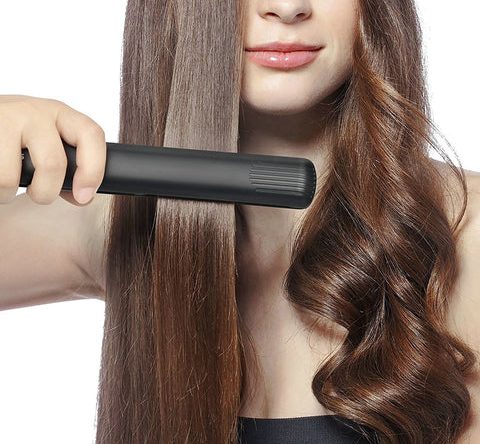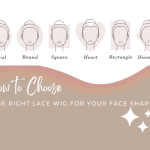Hair Care Tips
Can You Sleep in a Lace Wig? Pros, Risks & Tips
Sleep in a lace wig is a topic that sparks a lot of debate among wig wearers. While it’s possible and sometimes even convenient, there are important pros, risks, and preparation steps to consider if you want to protect your investment and maintain the health of both your wig and natural hair.
Below, we break down the benefits and downsides of sleeping in a wig, plus how to do it properly—if you choose to.
I. Benefits of Sleeping in a Wig (When Done Right)
While sleeping in a wig isn’t always recommended, doing it the right way can actually bring several practical advantages. From saving time to preserving your hairstyle, here are the main benefits you can enjoy when you sleep in your lace wig properly:
1. Time-Saver
Waking up with your wig already in place cuts down significantly on your morning routine. You won’t have to spend time reinstalling or restyling, especially if you’re running late. This is particularly helpful for busy professionals or parents who value every extra minute.
2. Preserves Hairstyle
Sleeping in a wig allows you to maintain complex hairstyles overnight without having to redo them each morning. Curls, waves, or sleek styles stay more intact when properly protected during sleep. It reduces the need for daily heat styling, which is better for wig longevity.
3. Protects Natural Hair
For those using wigs as a protective style, wearing them overnight adds a layer of defense for your natural hair. It shields your strands from nightly friction, environmental factors, and constant manipulation. This can help reduce breakage and promote healthier hair growth over time.
4. Boosts Morning Confidence
Waking up with a well-laid wig can give you an instant confidence boost. You’ll start your day already feeling put together, which can have a positive impact on your mindset. Whether you’re heading to work or jumping on a video call, you’re ready to go.
II. Risks of Sleeping in a Wig: What Happens if You Sleep in Your Wig Regularly
Sleeping in a lace wig occasionally might be convenient, but doing it too often can cause serious wear and tear—both to the wig and your natural hair. Here are the most common risks associated with this habit:
1. Wig Damage Over Time
Friction from tossing and turning during sleep can weaken the wig fibers, causing them to tangle, shed, or frizz. Over time, this reduces the overall lifespan of your wig, especially if it’s made from human hair. Even high-quality lace can stretch or tear from constant pressure.
2. Tangles and Matting
Without proper preparation, sleeping in a wig can lead to intense tangling, especially at the nape area. Matted wigs are harder to detangle and often require more force, which can lead to breakage or hair loss. This makes daily maintenance more time-consuming and frustrating.
3. Scalp Health Issues
Wearing a wig overnight can trap sweat, oil, and heat against your scalp, especially if you skip proper nightly care. This lack of ventilation can lead to irritation, itching, or even fungal infections in severe cases. A healthy scalp needs time to breathe and recover.
4. Breakage of Natural Hair
If your natural hair is braided underneath the wig too tightly or not completely dry before bed, it can break under the pressure. Combined with the weight of the wig, this stress may cause traction alopecia or thinning over time—particularly around the edges and crown.
III. Preparing Your Wig for Sleep: Step-by-Step Guide
Sleep in a lace wig can be safe—if done the right way. Proper preparation helps preserve the wig’s style, prevent tangling, and protect your natural hair underneath. Here’s how to get your wig ready for a restful night:
Step 1: Gently Detangle the Wig
Before heading to bed, use a wide-tooth comb or a wig brush to detangle your wig gently. Start from the ends and work your way up to the roots. This reduces friction during sleep and helps maintain the hair’s texture.
Step 2: Moisturize and Protect
Apply a light leave-in conditioner or wig-friendly serum to keep the hair moisturized overnight. If your wig is curly or prone to dryness, this step is especially important. Avoid heavy products that can build up or attract lint.
Step 3: Secure the Wig
Use soft braids, loose twists, or a low ponytail to keep the hair neat and minimize movement. Never go to bed with your wig free-flowing, as it increases the risk of tangles and friction damage.
Step 4: Use a Silk or Satin Bonnet
Cover your wig with a silk or satin bonnet or scarf. These materials reduce friction much better than cotton and help retain moisture. If you tend to move a lot in your sleep, consider also using a silk or satin pillowcase for extra protection.
Step 5: Check Wig Fit
Ensure the wig is not too tight before sleeping. The adjustable straps and combs should be snug but not restrictive. This prevents discomfort and minimizes tension on your scalp while you sleep.
IV. Morning Wig Care
Taking care of your wig in the morning is just as important as preparing it at night. A quick routine can revive the style, remove any tangles, and ensure the wig stays fresh and long-lasting. Here’s how to care for your wig after a night of sleep:
Step 1: Remove the Bonnet or Scarf
Gently take off your silk or satin bonnet or scarf. Avoid tugging or pulling, especially around the hairline, to prevent weakening the lace or loosening the wig.
Step 2: Lightly Finger-Comb or Brush
Use your fingers or a wide-tooth comb to gently detangle the hair. Start at the ends and work your way up. Avoid using a regular brush, especially on curly or wavy wigs, as it can cause frizz or alter the curl pattern.
Step 3: Refresh the Hair
Spritz the wig with a small amount of water or a leave-in conditioner designed for human hair wigs. This helps tame frizz, revive curls or waves, and restore softness and shine. For synthetic wigs, use a wig-specific detangler.
Step 4: Restyle if Needed
Depending on the wig texture, you may need to redefine curls using a curling wand or rollers. For straight hair, a flat iron may help smooth out any bends. Always use heat protectant if applying heat to a human hair wig.
Step 5: Check the Hairline and Fit
Look in the mirror and ensure your lace is still properly aligned and the wig feels secure. Adjust straps, combs, or glue-free adhesives if needed to keep it comfortable and natural-looking throughout the day.
V. When to Avoid Sleeping in Wigs
While it may be convenient to sleep in your wig, there are times when it’s better to take it off. Ignoring these situations can lead to faster wear, scalp issues, and reduced wig lifespan. Below are some key moments when you should avoid sleeping in your lace wig:
1. When the Wig Is Not Secure
If your wig is loose or poorly fitted, sleeping in it can cause it to shift, tangle, or even tear. Movement during sleep can place tension on the lace, combs, and straps, leading to damage both to the wig and your natural hairline.
2. When the Wig Is New or Recently Installed
Newly installed lace wigs—especially those with glue or tape—need time to set. Sleeping in them too soon may loosen the adhesive or misalign the lace. It’s best to allow the wig to settle and trim the lace properly before attempting overnight wear.
3. When the Wig Needs Washing or Restyling
If your wig feels dirty, smells musty, or looks frizzy and tangled, sleeping in it will only make things worse. This is a sign it needs to be cleaned, deep conditioned, or styled again before being worn overnight.
4. If You Have Scalp Irritation
If your scalp feels itchy, inflamed, or sweaty, it’s wise to remove the wig at night to allow your scalp to breathe. Wearing a wig continuously—especially without breaks—can worsen irritation or cause fungal buildup in humid environments.
5. After a Long Day
Sometimes your scalp just needs a break. After long hours of wear, removing the wig before bed allows your natural hair and skin to rest. It also gives you an opportunity to moisturize your scalp and inspect your wig for any needed maintenance.
Conclusion
Sleeping in a lace wig can be a time-saving and confidence-boosting solution—when done right. With proper preparation, gentle nighttime routines, and morning maintenance, it’s possible to preserve both your wig and natural hair. However, the risks of friction, tangling, and scalp issues should not be overlooked, especially if you wear your wig overnight frequently.
Whenever possible, give your scalp time to breathe, and always listen to your hair’s needs. Whether you sleep in your lace wig occasionally or nightly, the key is balance: care for your wig the same way you care for your natural hair—and it will serve you beautifully.







